Cosmology: The Structure & Future of the Universe
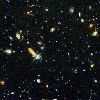
| H. E. Smith | Winter 2007 |

|
|
Physics 7 - Lecture Summary #19 Cosmology: The Structure & Future of the Universe |
 |

First, there are probably some questions on your mind:
The Geometry of the Universe
General Relativity allows for three geometries of Spacetime in the Universe depending on the density of the Universe and the Universal fate:
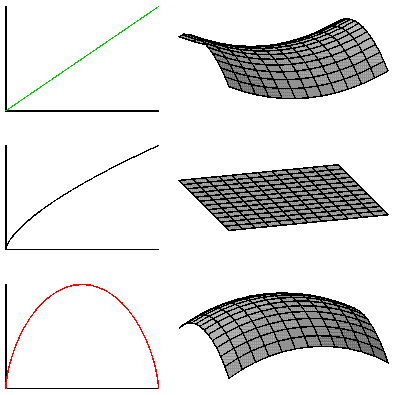 |
Hyperbolic (Open) Geometry
Flat (Euclidean) Geometry
Spherical (Closed) Geometry
|
.gif)
We Live in a Curved Space
| Before you go off thinking that this is all to wierd to try
to grasp, remember that we live on a spherically curved surface, called Earth.
Lines of longitude, parallel at the equator, follow the surface of the
Earth, converging at the poles.
Also, circles may not be what they seemed in high school geometry. Suppose
you started drawing circles around
the North Pole, keeping the pole at the center. Measuring the relation between
Circumference and radius, you would find that for small circles:
 R R
(Space always seems flat on small scales; that's why there are still people who believe the Earth is flat!). But continuing to draw ever increasing circles (lines of latitude) you will finally draw the biggest circle that you can on the earth - around the equator. Now the circumference of the circle is the circumference of the Earth. The radius, measured along the curved surface from the pole to the equator is 1/4 of the circumference of the earth:  R R
| 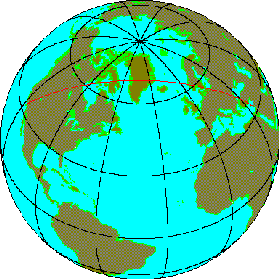 © Edward L. Wright (UCLA), used with permission. |
Cosmological Tests
 lum ~ 0.01 or
lum ~ 0.01 or
 ~
10-31g/cm3). But
what mass do we use for a galaxy? That is what about Dark Matter? If we
correct for the amount of known dark matter, say by the factor of 10 required
to bind galaxy clusters we are at about 10% of the critical density. But
we really don't know how much dark matter is out there. It is
entirely plausible that
~
10-31g/cm3). But
what mass do we use for a galaxy? That is what about Dark Matter? If we
correct for the amount of known dark matter, say by the factor of 10 required
to bind galaxy clusters we are at about 10% of the critical density. But
we really don't know how much dark matter is out there. It is
entirely plausible that
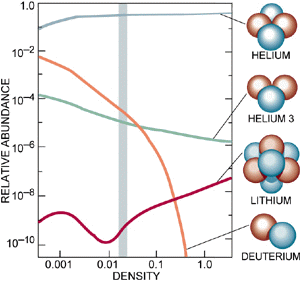
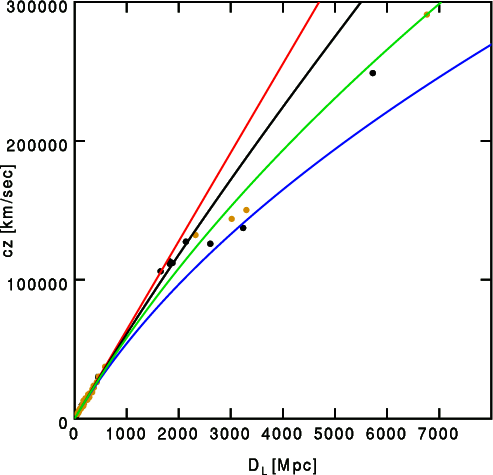
 = 2)
= 2) = 1)
= 1) = 0)
= 0)Cosmology Links

![]() Big Bang
Big Bang
![]() Physics 7 Lectures
Physics 7 Lectures
![]() Physics 7 Home
Physics 7 Home